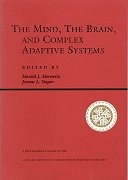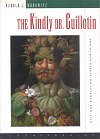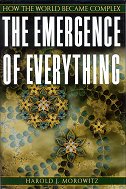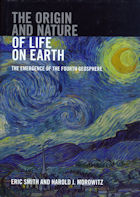Morowitz takes us on a whirlwind tour of 28 instances of emergence,
from the Big Bang, through nucleosynthesis, planetary formation, the
beginning of life, animals, primates, tools, language, and philosophy,
to mention but a few. His aim is to show us both what has
emerged on this admittedly anthropocentric journey, at which he is
highly and informatively successful, and how it has emerged,
at which he is rather less so.
His has an interesting tool for explaining emergence, that of "pruning
rules", defined thus:
nature yields
at every level novel structures and behaviors selected from the huge
domain of the possible by pruning, which extract the actual from the
possible. The pruning rules are the least understood aspect of this
approach to emergence, and understanding them will be a major feature
of the science of the future.
I have struggled to understand this concept as applied to emergence,
because after Morowitz gives his brief definition, he uses the term
without further explanation, as if it is now understood. (And he also
doesn't use it that much, either, so there is little context from
which to infer and abstract a meaning.) So, as I understand it (and I
may be wrong), the "possible" occupies some vast phase
space, and these pruning rules pare that space down to what actually
occurs (and, presumably, make the resulting phase space have a more
complex structure?). Then the pruned space is further reduced by the "frozen
accidents" of history, leaving us with the specific historical
route to consciousness we see on this planet. The idea seems to be
that these pruning rules are consequences of the laws of science, and
so will work universally, and provide more structure to emergence than
do the ideas of pure frozen accident and contingent development. (So I
might quibble with the labelling of the pre-pruned phase space as "the
possible".)
This is an interesting concept, and the identification of the Pauli
exclusion principle as one of these pruning laws is fascinating.
ppp55-6. [The
Pauli exclusion principle] is a
nondynamical principle that governs how electrons interact with each
other, yet it influences their dynamical behavior. It is a pruning
rule deep within the laws of nature that only permits behavior of a
certain symmetry character. It selects a set of states from all
possible states.
Another feature of the exclusion
principle is that it begins to illuminate how the whole may be
different from the sum of the parts. For the exclusion principle has
nothing to say about the behavior of an individual electron, yet it
applies to a system of two or more electrons. The Pauli principle is a
way of understanding why entities show in their togetherness laws of
behavior different from the laws that govern them in isolation. ....
This emergence is so intriguing
because it leads us to the enticing question of whether, at higher
hierarchical levels, there are not other nondynamical principles that
introduce new kinds of behavior. Since all of chemistry emerges from
one nondynamical rule, might there be another rule that will
illuminate biology, or a rule that will give insight into cognition?
....
... our reductionist systems are
not formally closed systems, and within science itself there is room
for new kinds of pruning that will illuminate the emergent transition
between hierarchies. ...
... At any level there may be a
presently unknown selection that will illuminate the hierarchical
emergence in some way that we don't understand.
I very much like this concept of pruning rules, providing
non-accidental structure at very many levels to the evolution of the
universe, although little further emphasis is laid on this structuring
concept throughout the work (possibly because the relevant laws have
yet to be discovered). However, I believe there is also another
feature at work, which is the emergent development of the (pre-or
post-pruned) phase space. (This development is described brilliantly
in Kauffman's Investigations.)
As pruning and contingency occur, new things become possible, new
regions of phase space open up due to "gateway events", and
so potentially new kinds of pruning rules develop. One could either
argue that one starts with a "big enough" phase space, much
of which is inaccessible until the relevant gateway events have
occurred, or that the non-predeterminable phase space is actually
co-created by the events it supports. Either way, this concept of a
growing unfolding phase space does not seem to be part of Morowitz'
vision (or if it is, I didn't spot it in my reading).
And there is another concept that Morowitz seems to take as a given,
which keeps intruding into the scientific discussion -- that of "God".
In fact, the last few chapters of the book (after we have emerged in
28 steps to "spirit") is almost entirely taken up with
concepts and history of this "God" concept. I have no
argument with including the place of various religions within the
emergence of civilisation and culture. But Morowitz seems to be taking
it much further than this, and I completely fail to understand what
points are being made in these chapters. To me, it is a lot of chat
about a null referent, and I can't work out where Morowitz is being
metaphorical and where literal. Even given the benefit of the doubt,
if it is all metaphorical, it isn't an interesting or helpful
metaphor, as I can't work out what it is a metaphor of. I
don't think it adds anything to the argument. (Well, it certainly
didn't for me.)
In summary: this is a good description of emergence from the Big
Bang to us, in 28 erudite bite-sized steps, with an interesting, if
underused, idea of physically-based pruning rules. (The comments about
the Pauli exclusion principle alone probably make the reading effort
worthwhile.) But it seems to miss the accompanying concept of an
unfolding evolving phase space. And the last few chapters can be
safely skipped.



